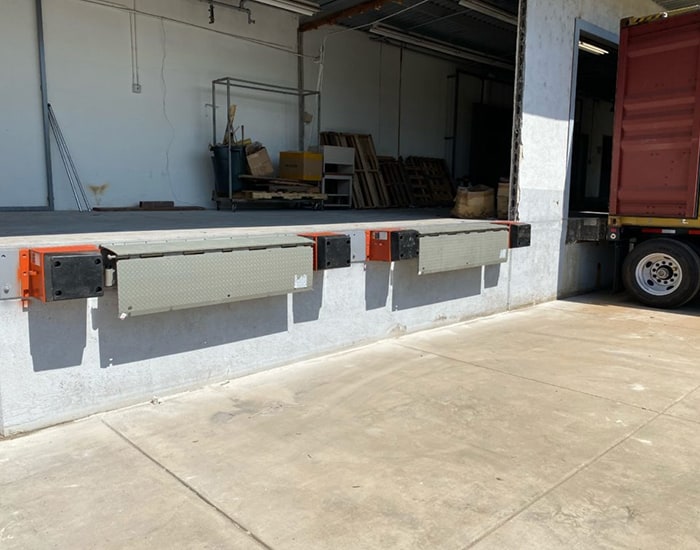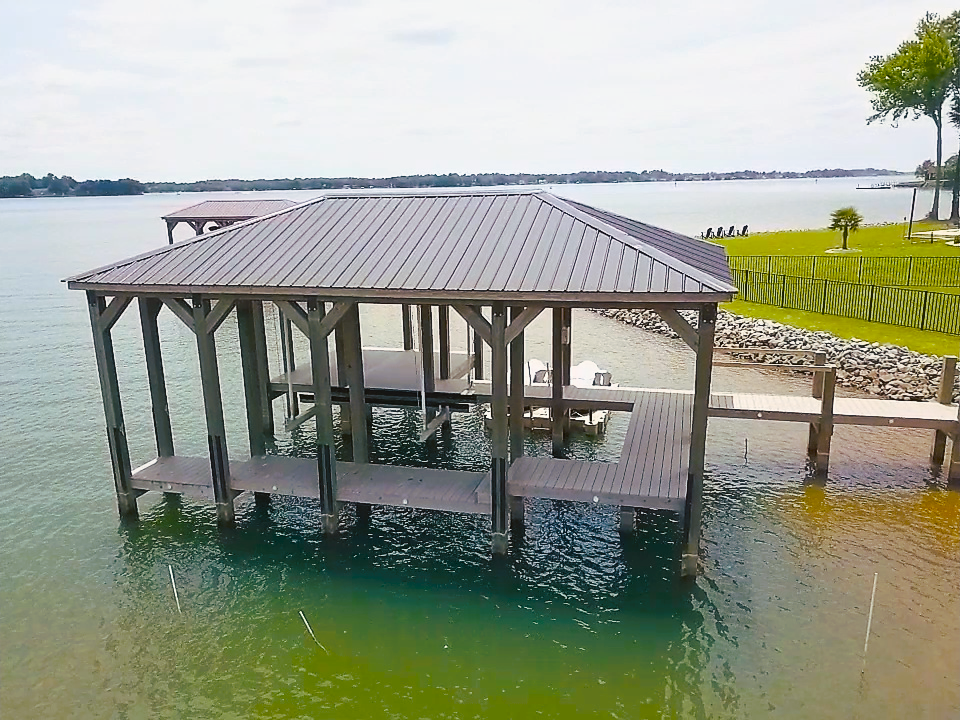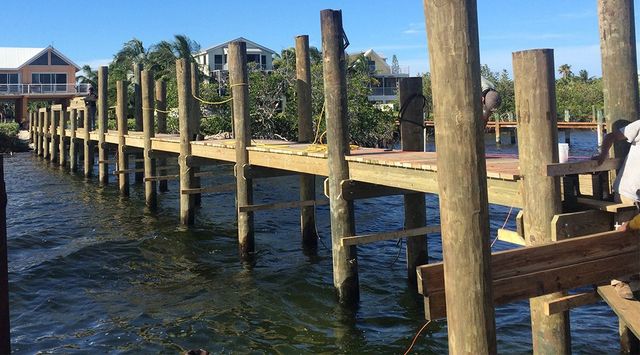Specialist Insights on Durable Dock Repairs Solutions
Wiki Article
Efficient Dock Repair Service Techniques: Making Sure Architectural Stability
Making sure the structural stability of docks through effective fixing strategies is extremely important for the durability and security of aquatic facilities. This entails a multi-faceted strategy beginning with detailed inspections utilizing sophisticated innovations like sonar tools and from another location operated vehicles (ROVs) to detect both visible and concealed damages. Ultimately, choosing the best repair products, such as corrosion-resistant alloys and composite products, is critical for resilience. Architectural support methods, consisting of the application of cross-bracing systems and load-distribution plates, play a vital duty in mitigating tension factors. Nevertheless, the significance of these strategies ends up being evident when checking out advanced fixing techniques and preventative upkeep strategies.Analyzing Dock Damage
Evaluating dock damage is a crucial very first step in guaranteeing the structural integrity and safety of any docking facility. Key facets to take a look at consist of the dock's structure, pilings, decking, and hardware (Dock Repairs).Structural designers or certified assessors normally do these assessments using specialized devices and strategies. Undersea assessments might use finder devices or remotely ran cars (ROVs) to spot immersed damage. Above water, visual examinations are matched by utilizing moisture meters and various other diagnostic devices to discover underlying concerns not promptly visible to the naked eye.

Picking Fixing Products
Selecting the suitable repair work materials is an essential action in the dock reconstruction procedure, one that directly influences the longevity and performance of the repaired structure. Material option must be driven by factors such as environmental problems, load-bearing requirements, and compatibility with existing dock components. For example, wood is a conventional choice for docks due to its all-natural strength and visual appeal. Picking the ideal type of timber, such as pressure-treated lumber or normally rot-resistant types like cedar or teak, is critical to hold up against water environments.In enhancement to wood, composite products are progressively preferred due to their toughness and low maintenance demands. Compounds, commonly made from a mix of plastic and wood fibers, use outstanding resistance to rot, insects, and UV damage. For steel docks, picking corrosion-resistant alloys such as galvanized steel or marine-grade aluminum is necessary to avoid corrosion and guarantee architectural stability in saline water problems.
Epoxy resins and marine-grade sealants are crucial for repairing fractures and securing joints, giving a waterproof barrier and boosting the dock's total strength. By carefully choosing high-grade materials, dock repair work can accomplish durable outcomes, therefore protecting versus future destruction and ensuring risk-free, reliable use.
Structural Reinforcement Methods
Effective architectural support methods are vital in guaranteeing the stability and longevity of dock fixings. This approach is especially effective for anchors revealed to heavy loads or rough environmental conditions.An additional necessary method is the application of fiber-reinforced polymers (FRP) These materials supply high strength-to-weight proportions and outstanding resistance to corrosion, making them excellent for strengthening concrete or wooden docks. FRP can be used in strips or sheets and bonded with epoxy materials to enhance architectural stability.
Bracing and securing systems also play an essential role in architectural support. Cross-bracing, utilizing steel or wood light beams, can counteract lateral pressures, decreasing guiding and motion. Anchoring systems, such as helical piers or driven stacks, provide a secure foundation by moving loads to much deeper, more steady dirt layers.
Last but not least, the combination of load-distribution plates can assist disperse weight much more equally across the dock's surface area, mitigating local stress points. These strategies jointly guarantee that docks stay risk-free and durable, with the ability of standing up to the read the article roughness of their operational setting.
Advanced Repair Service Approaches

An additional advanced technique involves undersea welding, which permits fixings to be performed without the demand to dewater the location. This approach is especially helpful for addressing structural issues in immersed dock parts, making sure marginal interruption to operations. Enhanced welding strategies, paired with robot systems, deliver precision and integrity, therefore expanding the life expectancy of the dock.
Furthermore, cathodic protection systems are applied to stop rust in metallic dock frameworks. By utilizing sacrificial anodes or amazed current systems, these strategies effectively mitigate the electrochemical procedures that result in material damage.
Finally, advanced surveillance innovations, such as architectural health and wellness monitoring (SHM) systems, give real-time data on the condition of dock frameworks. These systems enable positive maintenance and timely treatments, ultimately making certain the long-term architectural integrity of the dock.
Upkeep and Prevention
Maintenance and avoidance are essential concepts that underpin the durability and safety of dock frameworks. Regular assessments are paramount, enabling early detection of damage, possible weaknesses, and ecological impacts. A positive strategy, including regular look for rust, rot, and architectural changes, reduces pricey repairs and lengthens the dock's functional life.Preventative steps must consist of applying protective layers to metal elements to secure versus rust and using treated timber to resist decay. Furthermore, making certain proper drain and ventilation can stop water buildup, which is a common cause of structural deterioration. Integrating high quality products and sticking to manufacturer guidelines during construction and repair work phases likewise play vital duties in boosting resilience.

Educating employees in dock linked here upkeep best practices ensures constant application of safety nets. Leveraging technical developments, such as drones for inspections and sensing units for real-time surveillance, can additionally improve maintenance initiatives. By prioritizing upkeep and prevention, dock owners can make certain structural integrity, functional security, and cost-effective monitoring over the dock's life expectancy.
Conclusion
In verdict, maintaining the structural integrity of marine centers demands comprehensive dock repair work methods. Advanced repair service strategies, paired with regular maintenance practices, guarantee the dock stays secure and operational under diverse environmental conditions.Making sure the architectural honesty of anchors via reliable fixing strategies is paramount for the longevity and safety of marine centers.Selecting the appropriate repair products is a pivotal action in the dock reconstruction procedure, one that straight affects the durability and performance of the repaired framework.Reliable architectural support methods are crucial in guaranteeing the stability and longevity of dock repairs. By focusing on upkeep and prevention, dock owners can make certain architectural stability, operational safety, and cost-efficient monitoring over the dock's life expectancy.
In conclusion, preserving the architectural honesty of aquatic centers necessitates comprehensive dock fixing methods.
Report this wiki page